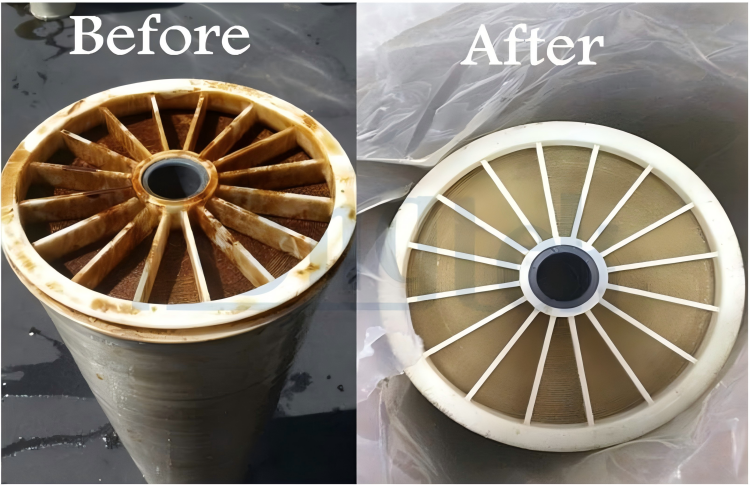Membranas RO de ósmosis inversa Son fundamentales en los procesos de purificación del agua.. La limpieza regular es esencial para mantener su eficiencia.. Sin embargo, es desconcertante cuando, después de una limpieza profunda, el flujo de permeado no mejora sino que disminuye. Este artículo profundiza en las razones detrás de este resultado contrario a la intuición y ofrece soluciones viables..
Comprensión de la secuencia de limpieza de membranas de ósmosis inversa
La secuencia de limpieza de las membranas de RO es crítica. Un orden incorrecto puede exacerbar las incrustaciones en lugar de aliviarlas..
-
Orgánico y bioincrustante: Iniciar con un alcalino Limpieza para eliminar materia orgánica y biopelículas.. Soluciones alcalinas, como hidróxido de sodio (Naóbra), descomponer eficazmente los compuestos orgánicos.
-
Escalado inorgánico: Siga con un ácido Limpieza para disolver incrustaciones inorgánicas como el carbonato de calcio.. Soluciones ácidas, como el ácido clorhídrico (HCL), son eficaces en este sentido.
Invertir esta secuencia puede conducir a la compactación de incrustaciones orgánicas., haciéndolos más difíciles de eliminar.
El papel de los agentes y las condiciones de limpieza
La elección de los agentes de limpieza y sus condiciones de aplicación influyen significativamente en la eficacia de la limpieza..
-
Concentración y pH: Las soluciones de limpieza suelen tener una concentración de entre 0,03 y 2,0 %.. El pH debe ajustarse según el tipo de incrustación..
-
Temperatura: Las temperaturas elevadas pueden mejorar la eficiencia de la limpieza, pero deben permanecer dentro de los límites de tolerancia de la membrana..
-
Tiempo de contacto: Un tiempo de remojo adecuado garantiza una limpieza profunda. Sin embargo, la exposición prolongada puede provocar la degradación de la membrana.
Causas potenciales de disminución del flujo de permeado después de la limpieza
-
Eliminación incompleta de incrustaciones: Los contaminantes residuales pueden seguir impidiendo el flujo de agua.
-
Daño a la membrana: Los agentes de limpieza agresivos o los niveles de pH inadecuados pueden dañar la superficie de la membrana., reduciendo su permeabilidad.
-
Redeposición de incrustaciones: Si la solución de limpieza se satura, Las incrustaciones pueden volver a depositarse en la membrana..
-
Recrecimiento de biopelículas: La eliminación inadecuada de biopelículas puede provocar un rápido crecimiento, flujo de permeado decreciente.
Protocolo de limpieza recomendado de membranas RO
Un protocolo de limpieza estructurado puede mitigar los riesgos asociados con la limpieza de membranas.
-
Limpieza alcalina: Utilice un 0.1% Solución de NaOH a pH 12 y 35°C para eliminar incrustaciones orgánicas y biológicas.
-
Limpieza con ácido: Sigue con un 0.1% Solución de HCl a pH 2 y 25°C para disolver incrustaciones inorgánicas..
-
Enjuagar: Enjuague bien el sistema con agua desionizada entre los pasos de limpieza para evitar reacciones químicas..
-
Tratamiento biocida: Si la bioincrustación es grave, incorporar un tratamiento biocida para eliminar contaminantes microbianos.
Datos que respaldan la eficacia de la limpieza
La siguiente tabla ilustra el impacto de las secuencias de limpieza adecuadas en la recuperación del flujo de permeado.:
| Secuencia de limpieza | Recuperación del flujo de permeado (%) |
|---|---|
| Alcalino → Ácido | 95 |
| Ácido → Alcalino | 80 |
| Sólo ácido | 70 |
| Sólo alcalino | 85 |
Fuente de datos: Estudios de limpieza de membranas, 2023
Conclusión
La limpieza adecuada de las membranas de ósmosis inversa es un delicado equilibrio entre química y procedimiento.. Es fundamental comprender la naturaleza de la suciedad y aplicar la secuencia de limpieza correcta con los agentes y condiciones adecuados.. Descuidar estos factores puede conducir a una disminución del rendimiento y un aumento de los costos operativos.

 Membrana MBR
Membrana MBR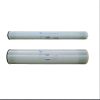 Membrana de ósmosis inversa
Membrana de ósmosis inversa Membrana RO residencial
Membrana RO residencial Membrana UF
Membrana UF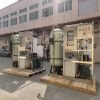 Planta de tratamiento de agua
Planta de tratamiento de agua Máquina residencial RO
Máquina residencial RO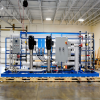 Sistema RO salobre
Sistema RO salobre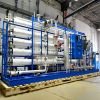 Sistema de agua de mar/planta SW ro
Sistema de agua de mar/planta SW ro Filtro de bolsa
Filtro de bolsa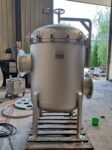 Filtro de cartucho
Filtro de cartucho Sistema de filtración de agua comercial
Sistema de filtración de agua comercial Sistema de limpieza de membrana(Titubear)
Sistema de limpieza de membrana(Titubear)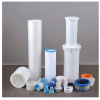 Accesorios de consumo
Accesorios de consumo